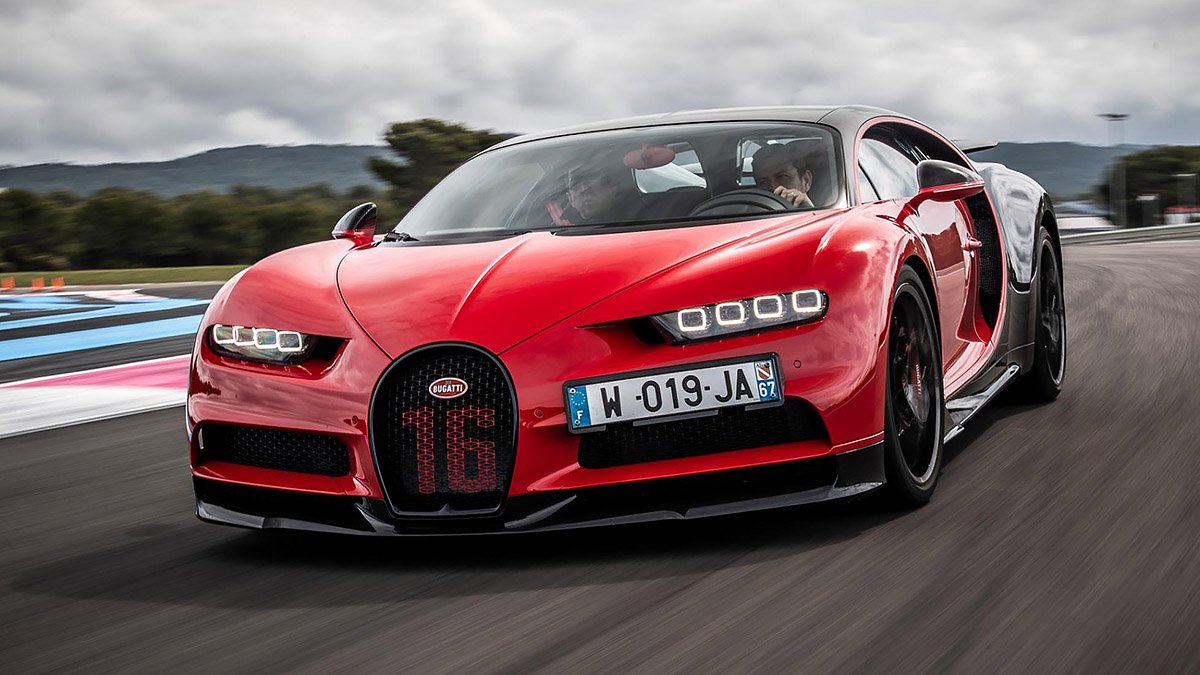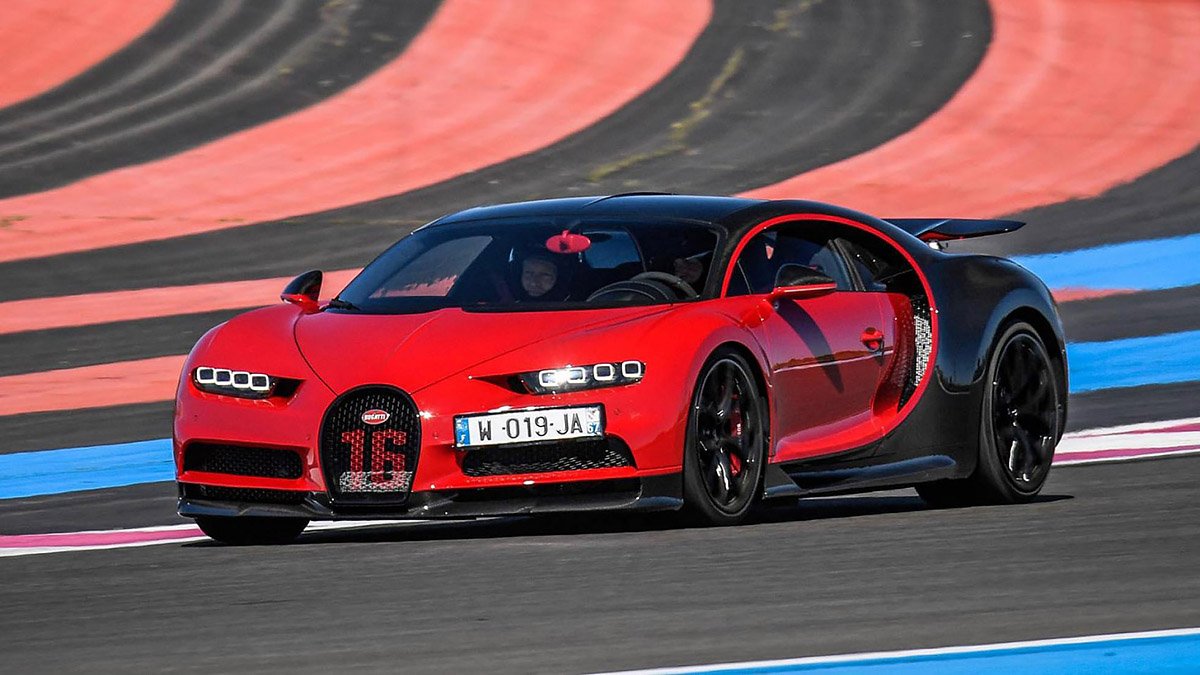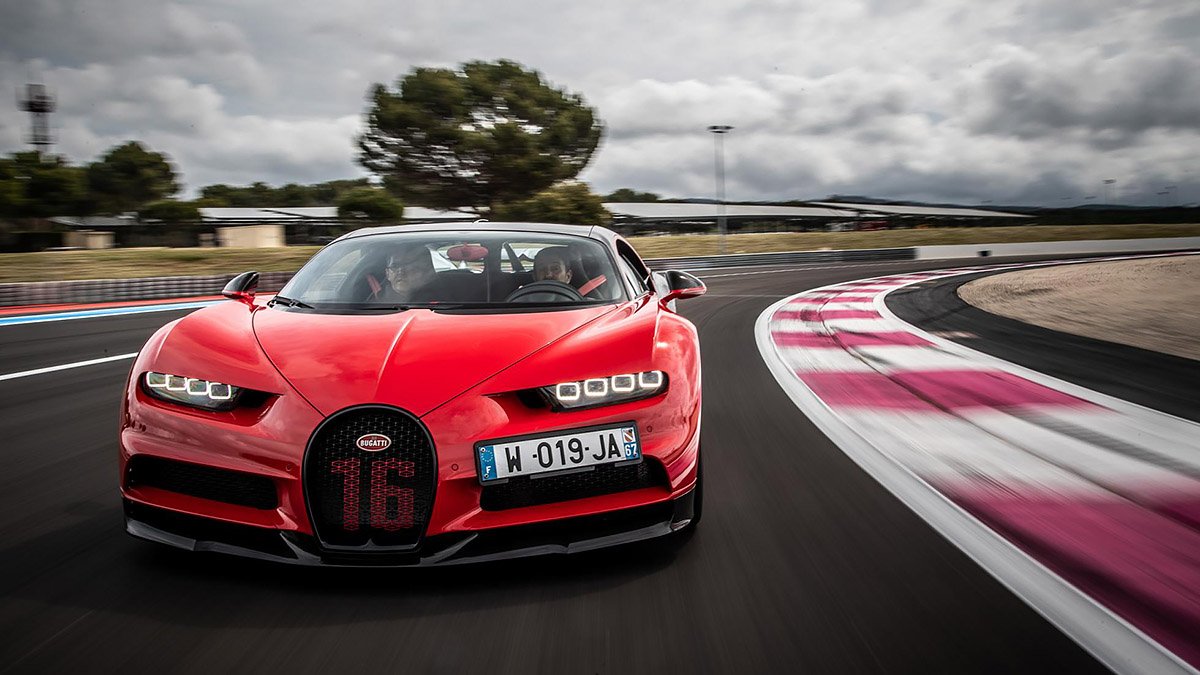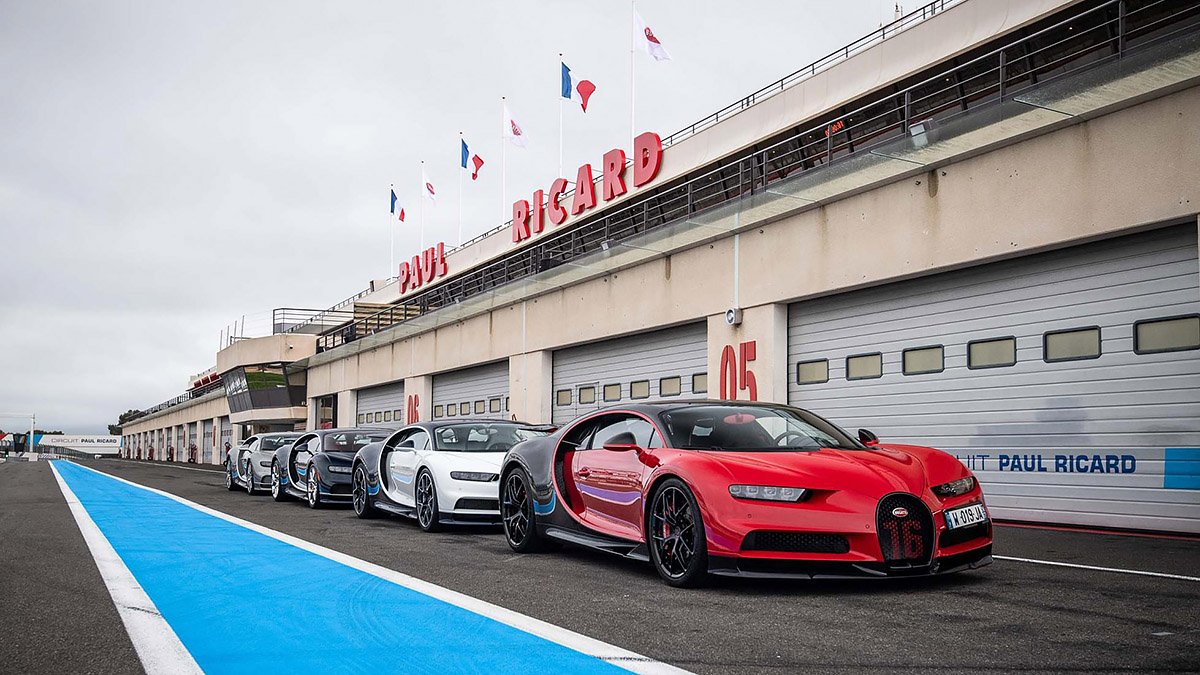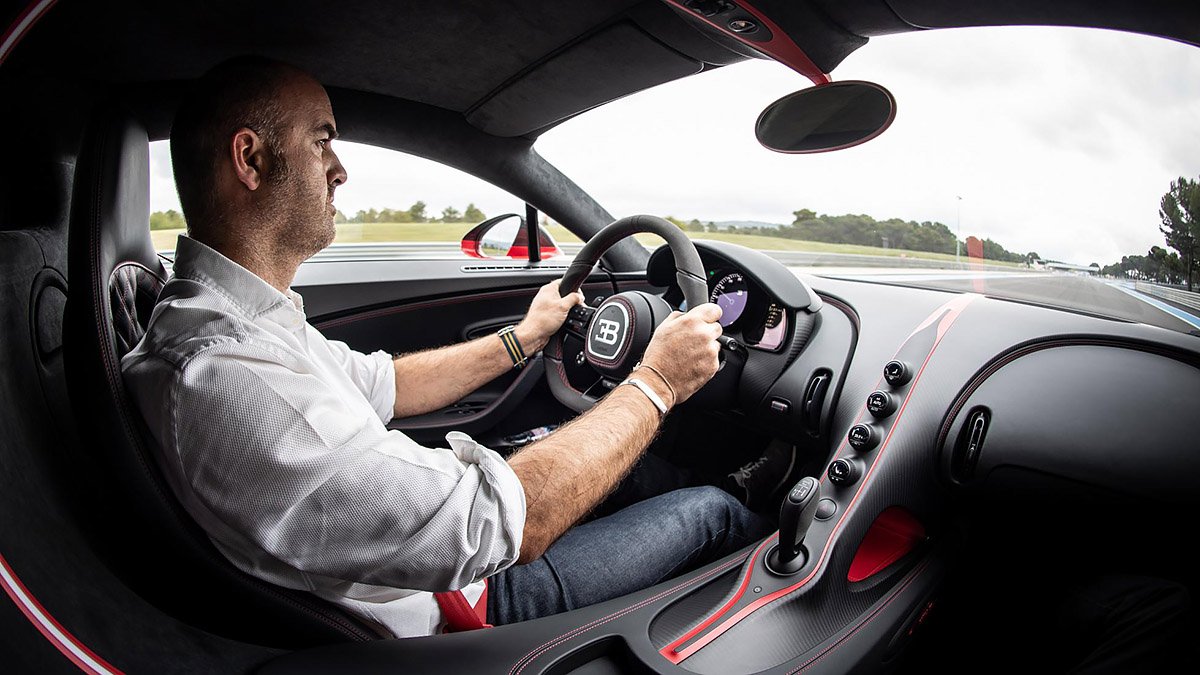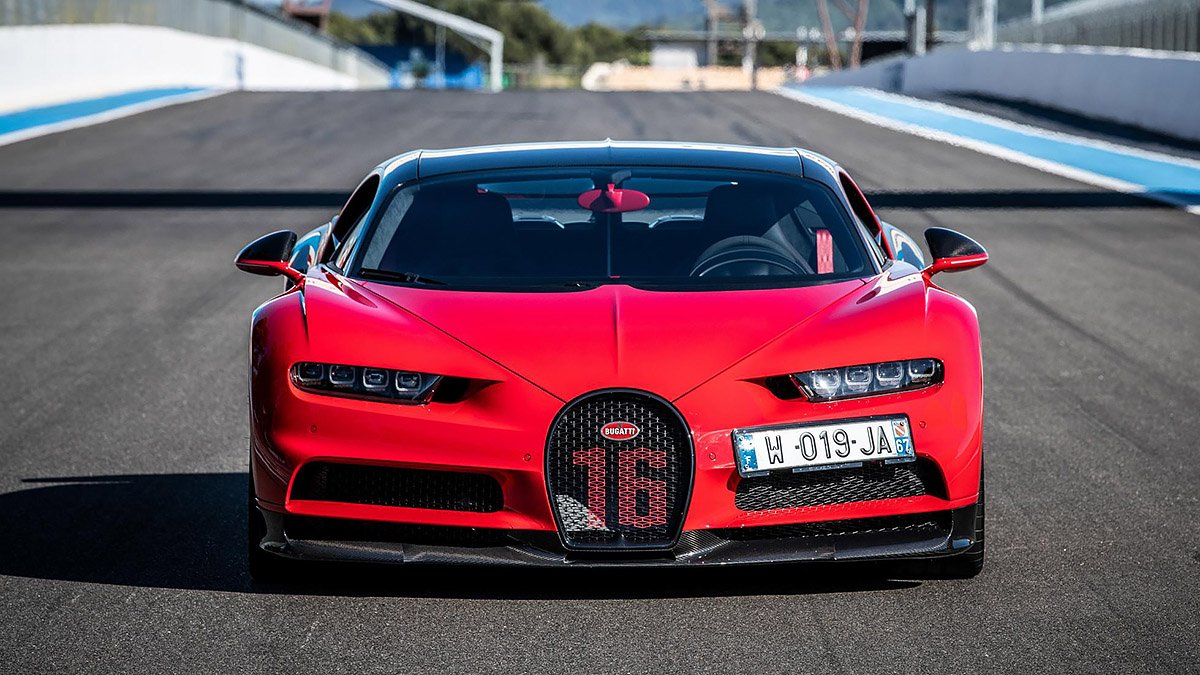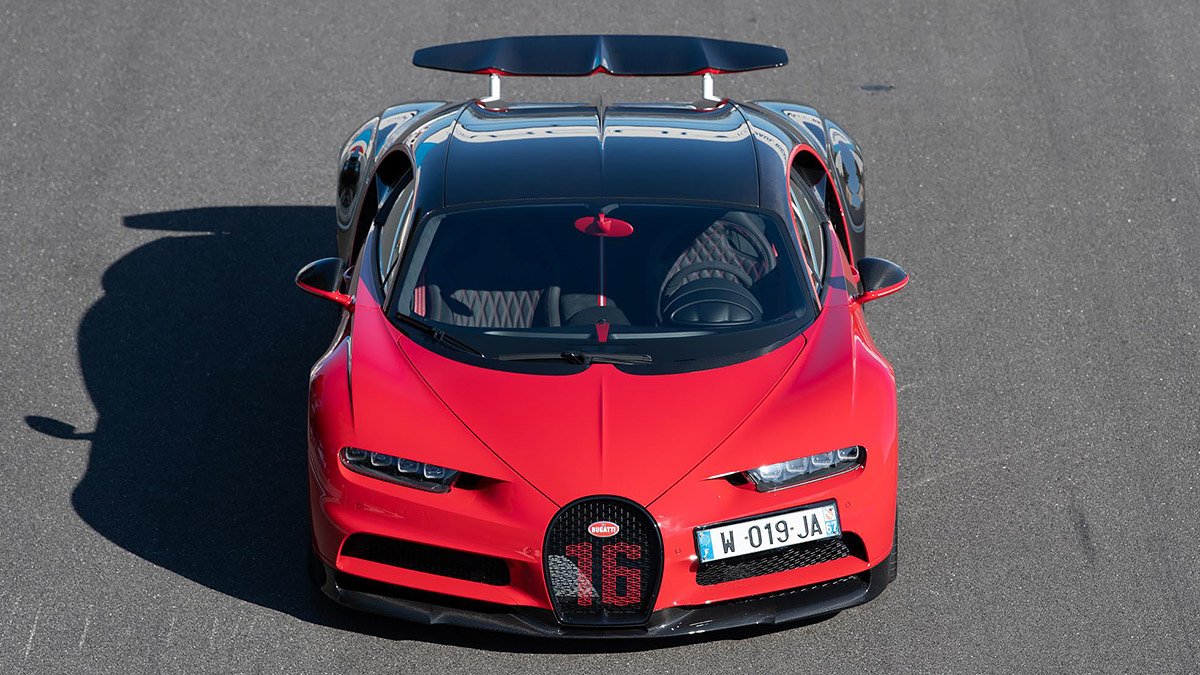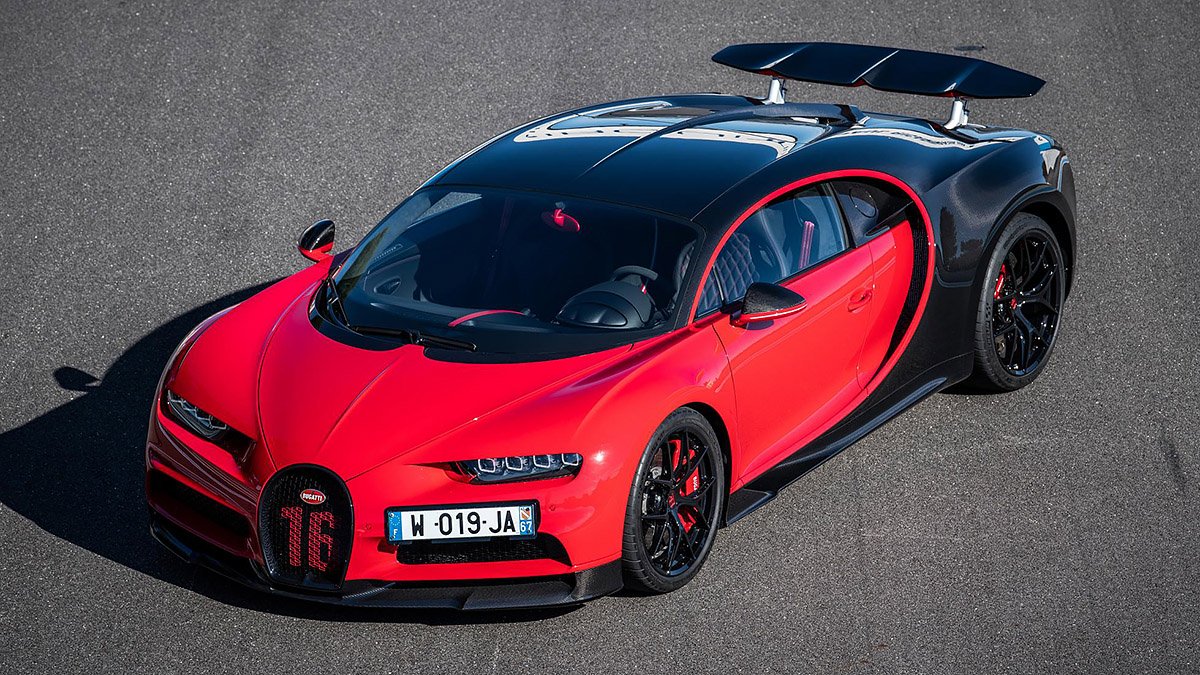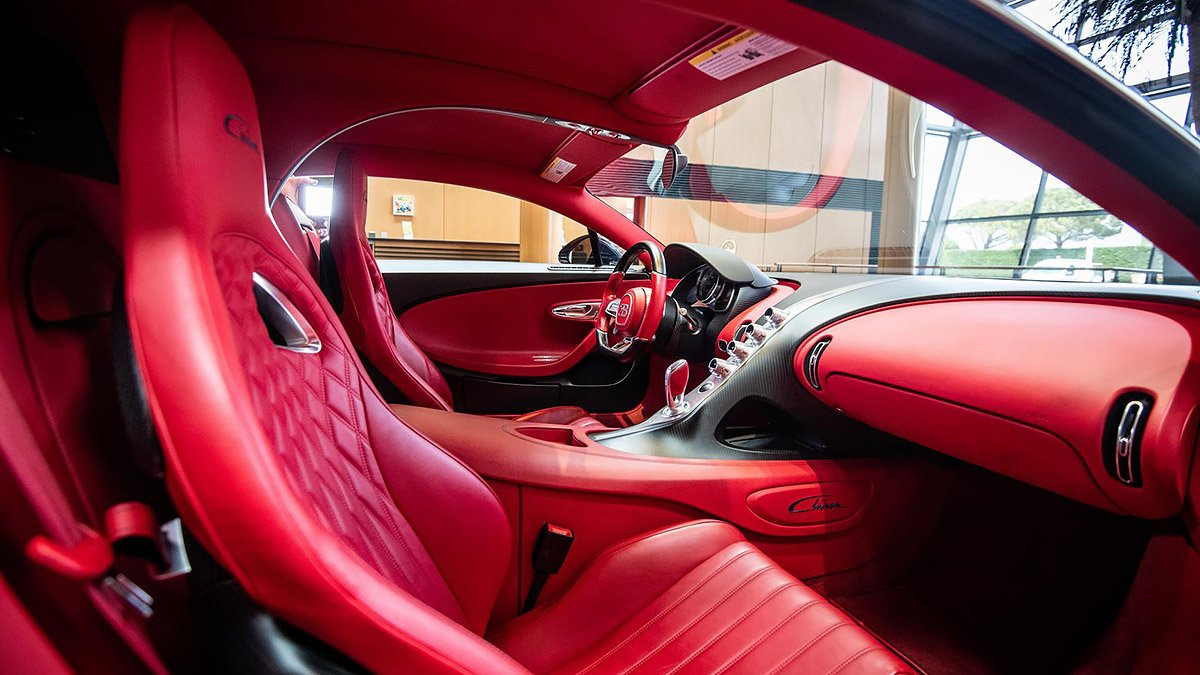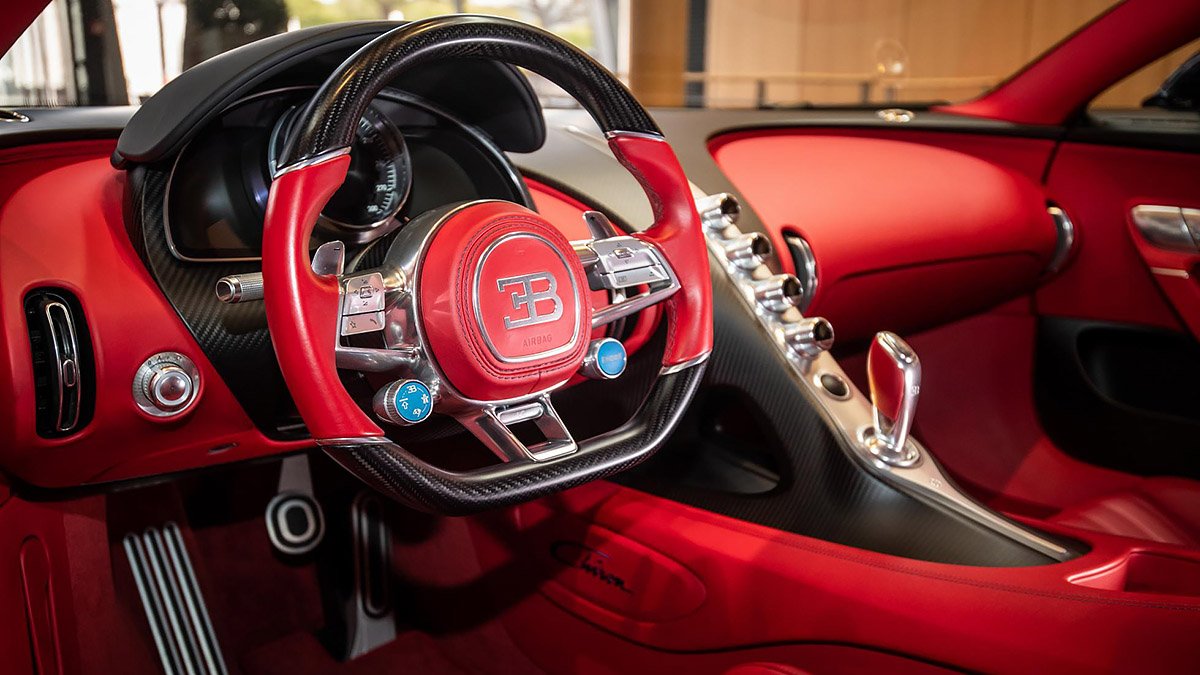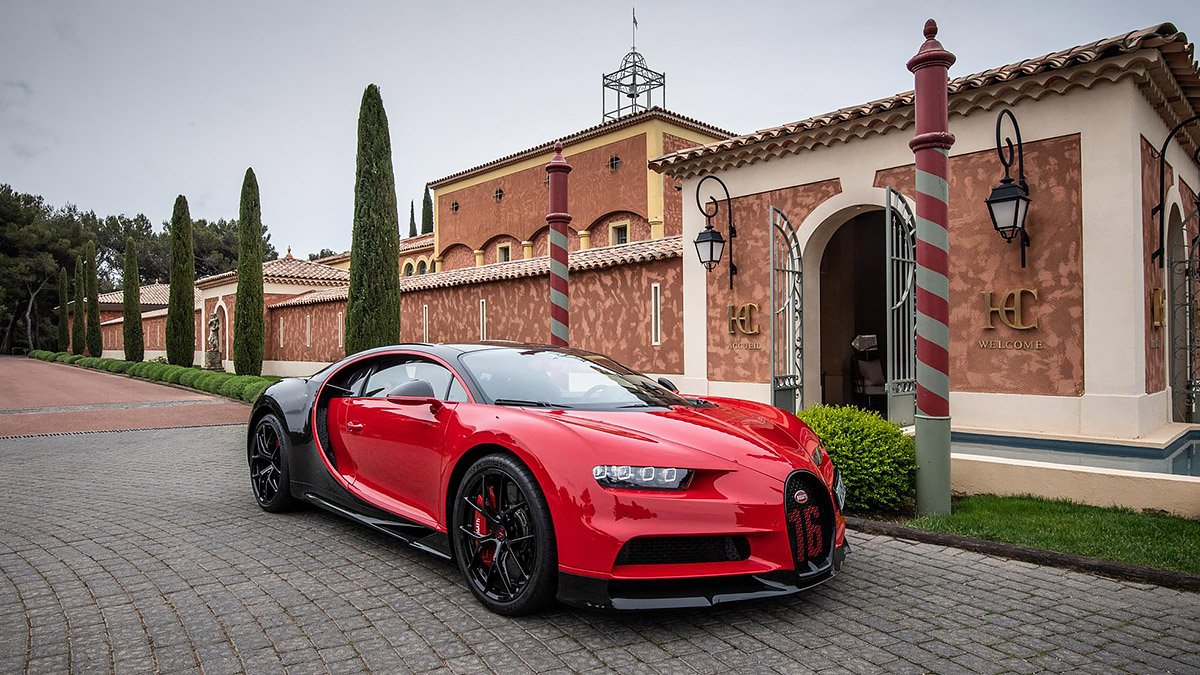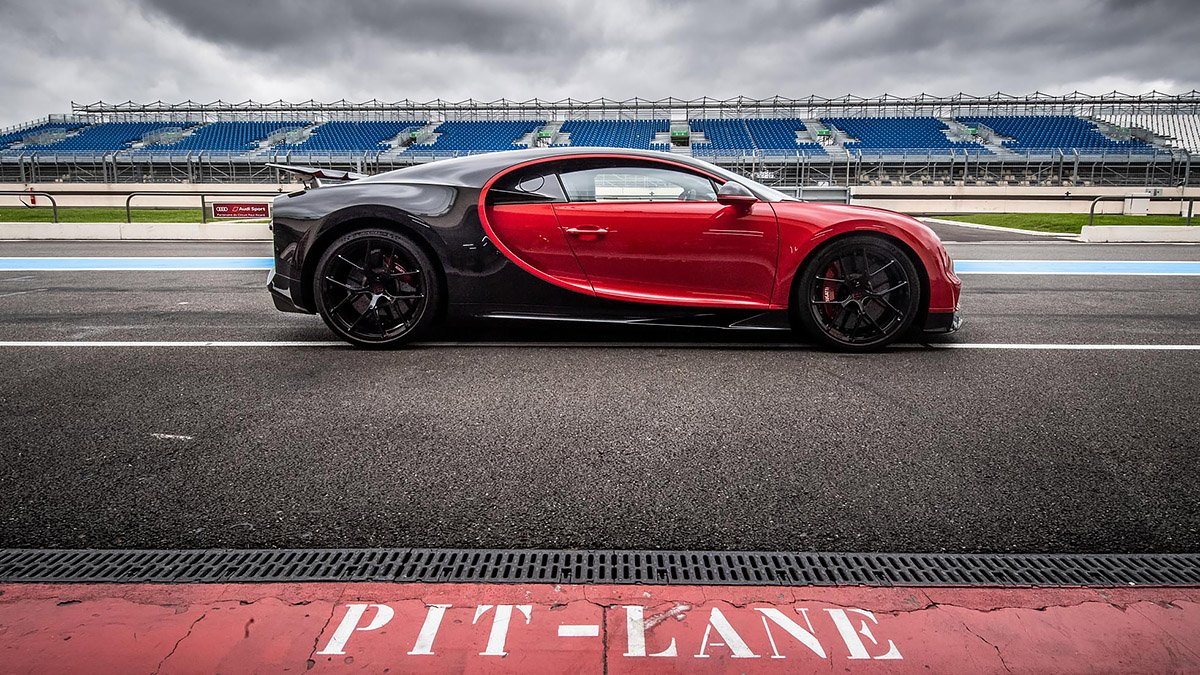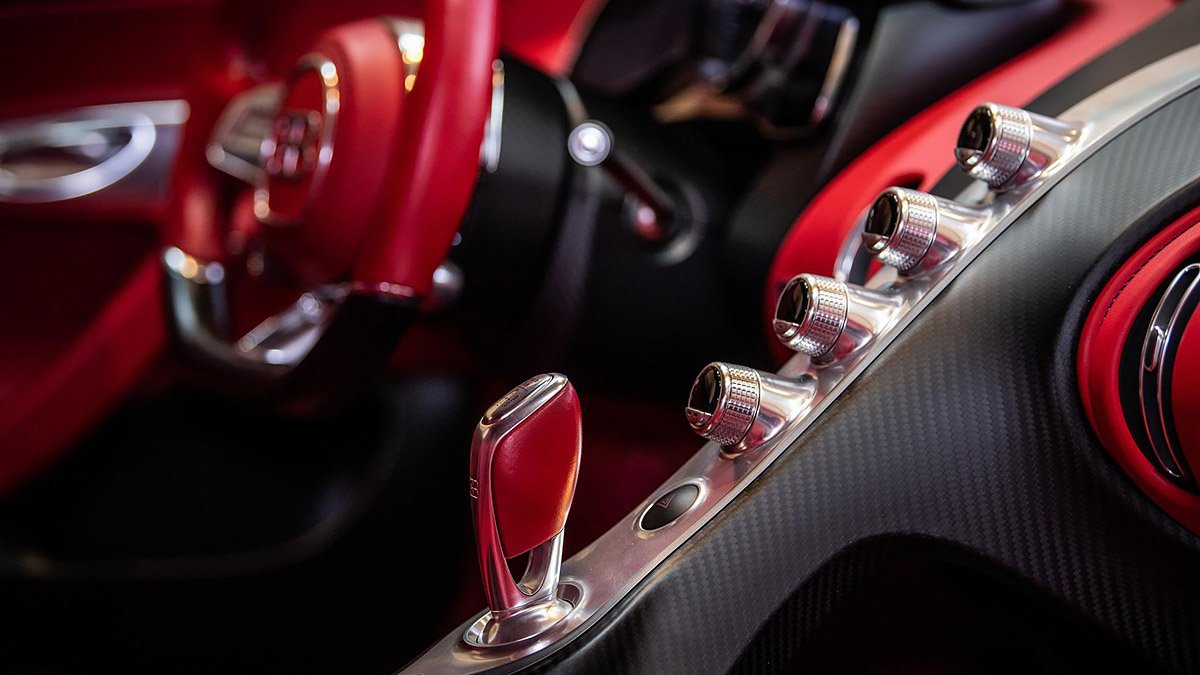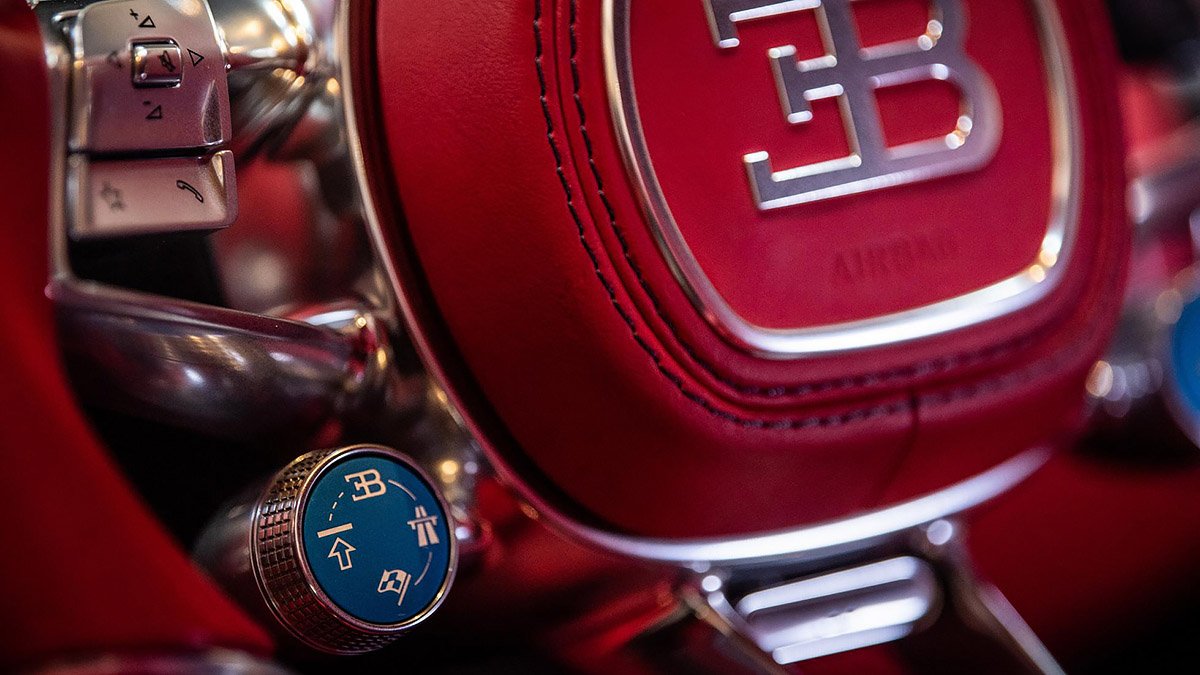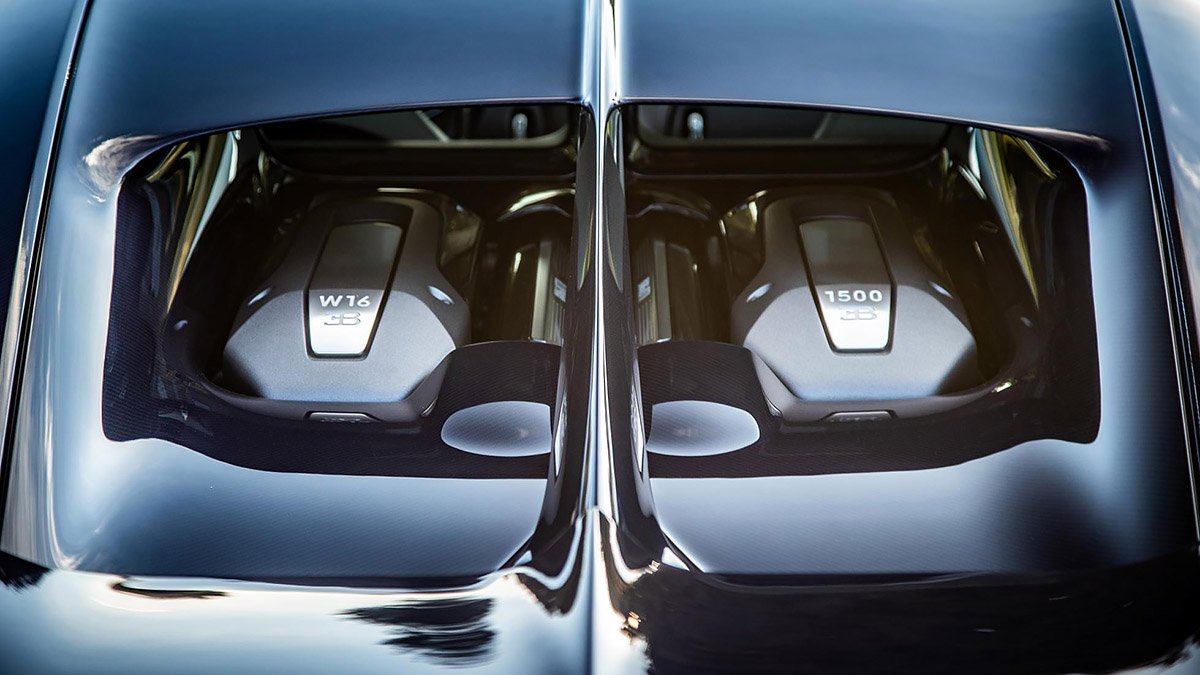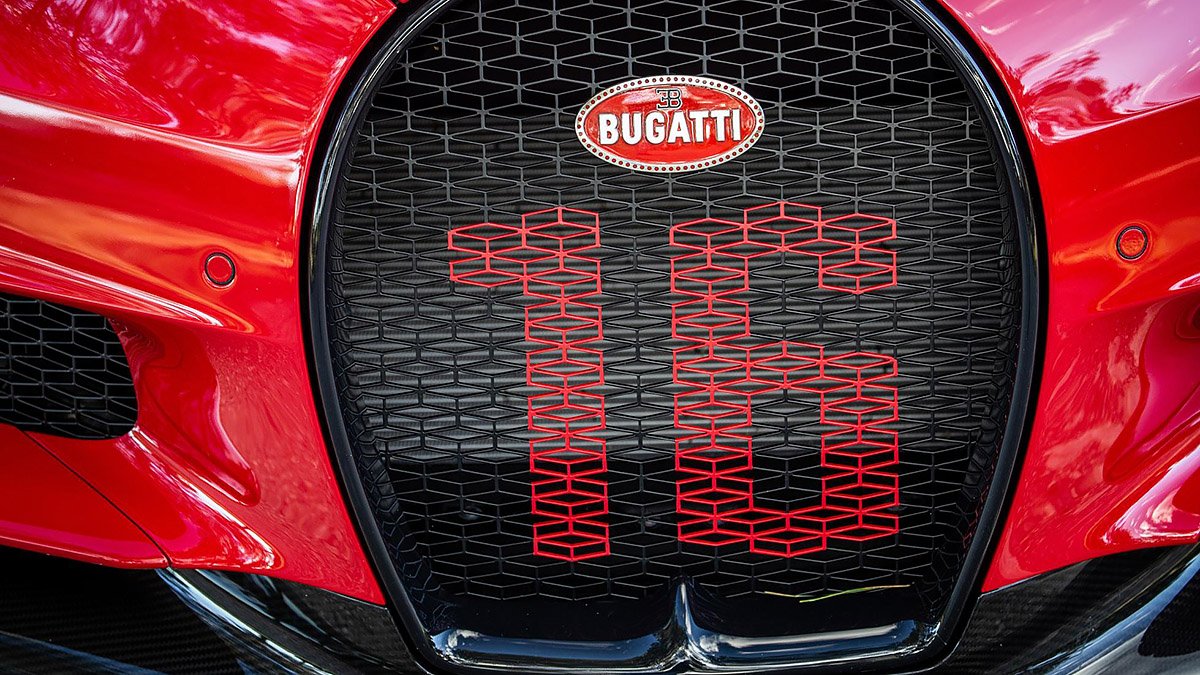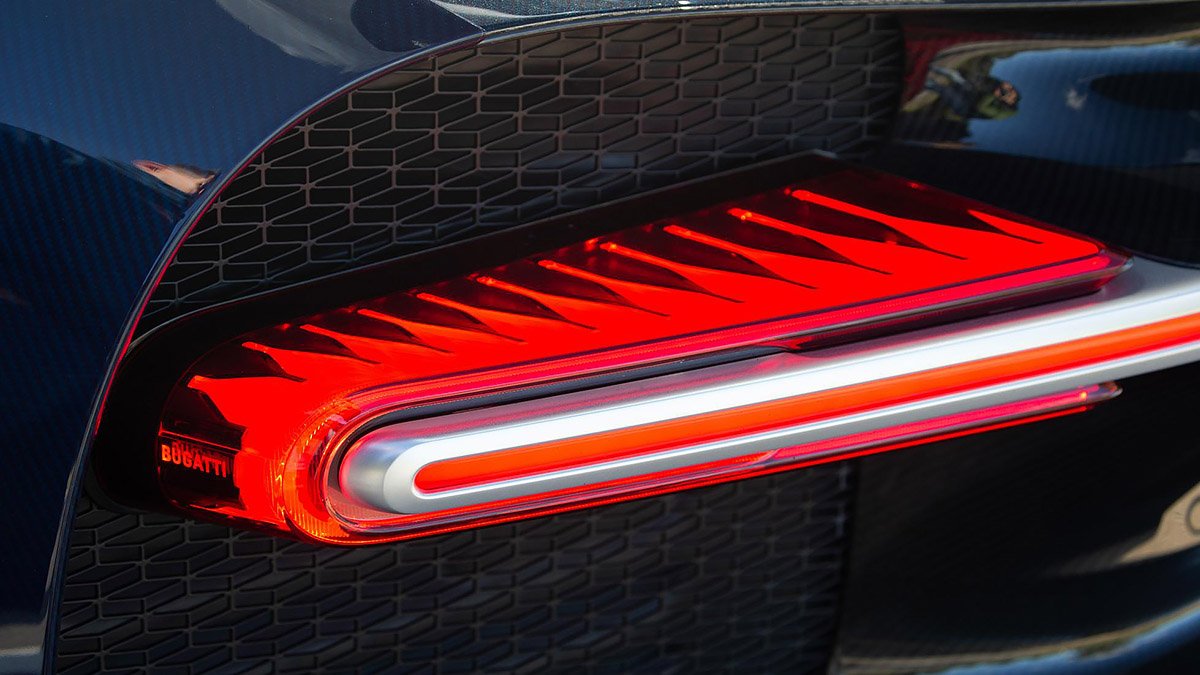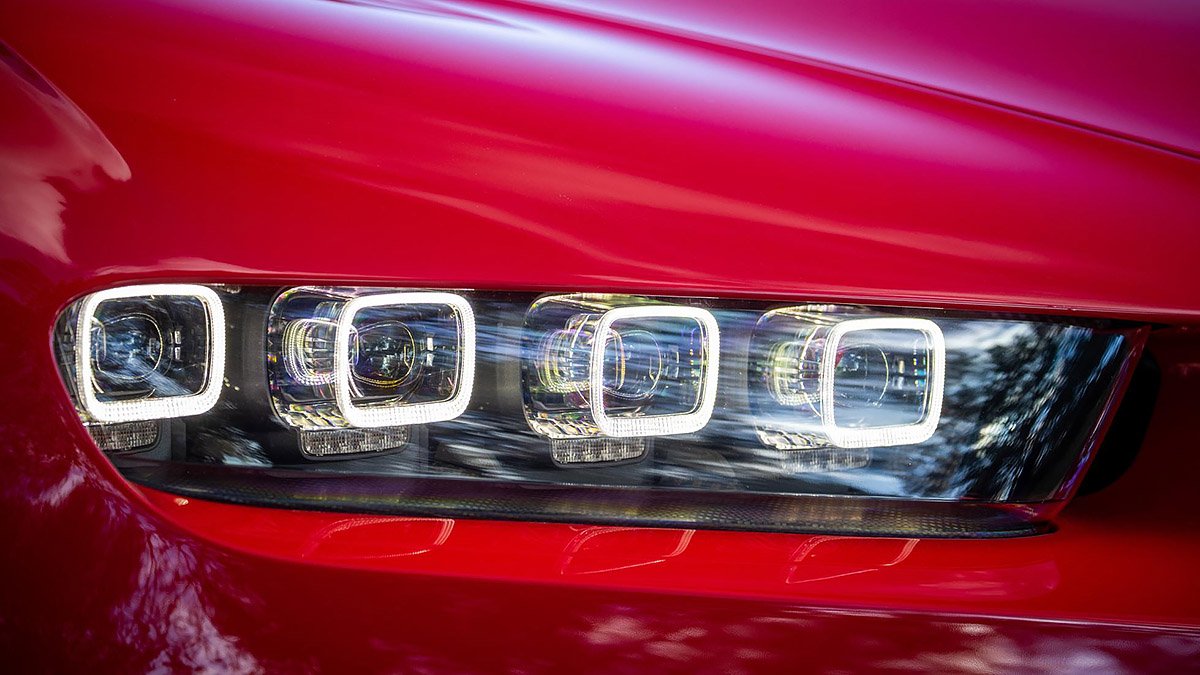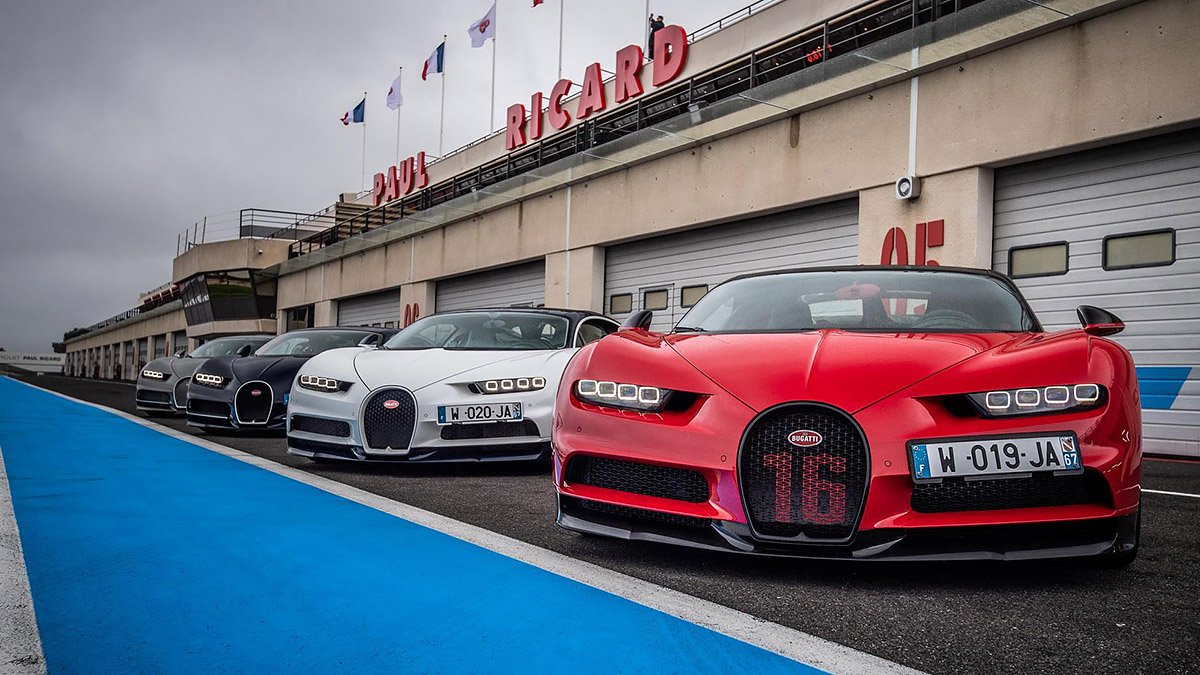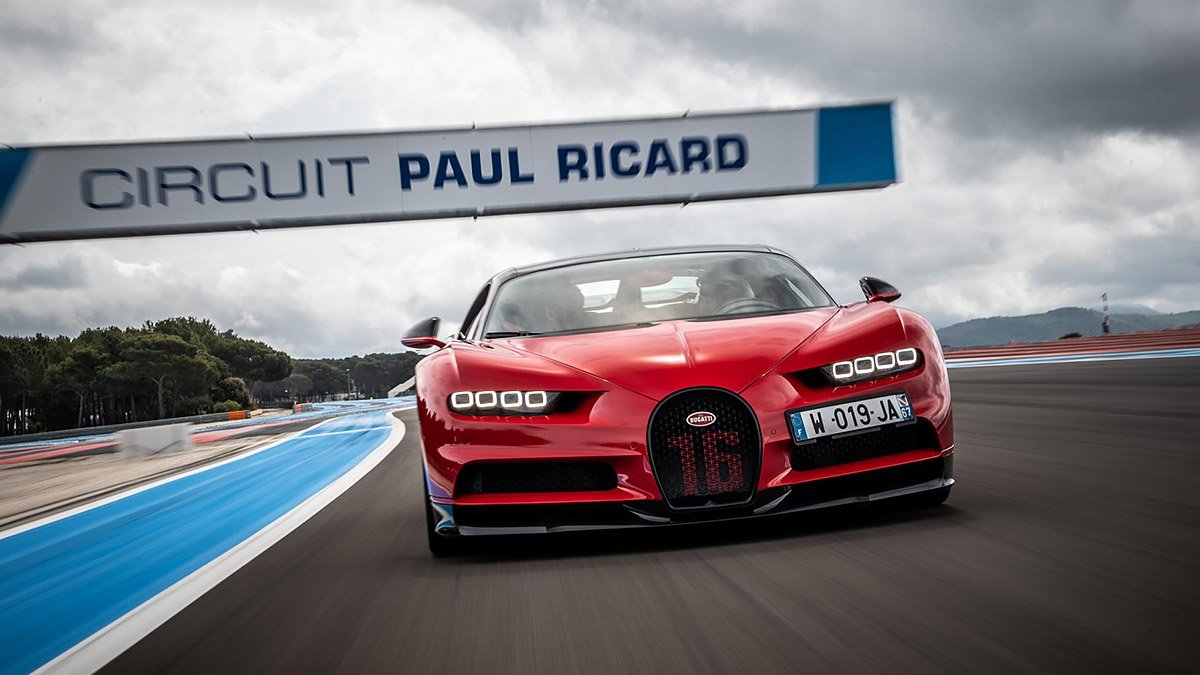Bugatti Chiron Sport review: track-friendly speed machine tested
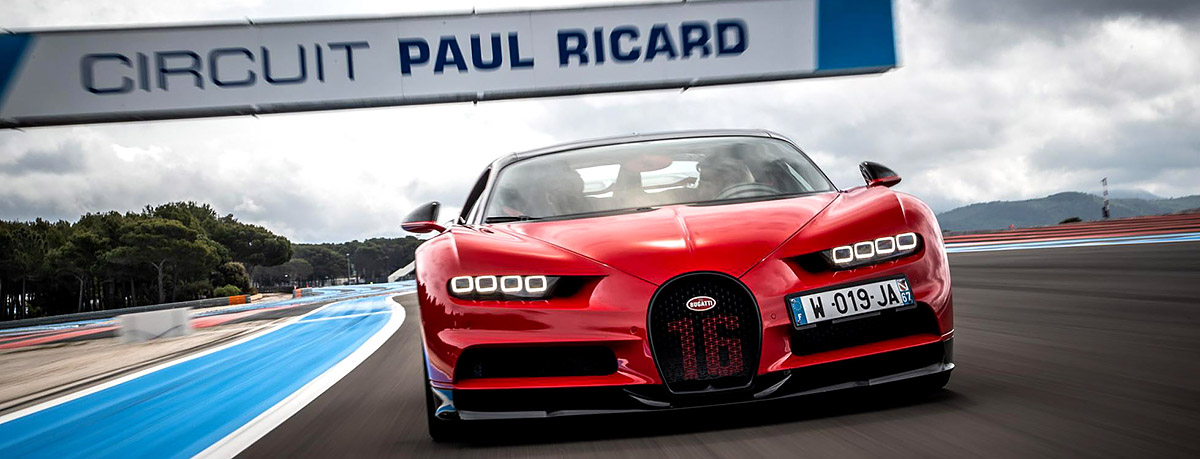
A Bugatti Chiron?! Didn’t you review that yonks ago?
Good point. Since the Chiron’s launch in 2016, Top Gear has probably covered more miles in the ultimate expression of speed and luxury than most Chiron owners. Our Chiron story started with Harris’s world-exclusive first drive of the car in Dubai, including several vmax runs on a 2.8-mile-long deserted runway where the car’s capabilities for battering physics in the pursuit of speed became abundantly clear.
Last year, I was tasked with delivering the Chiron to our annual Speed Week event (well, someone had to do it). That 400-mile journey from Bugatti HQ in Molsheim to Clermont-Ferrand demonstrated another side of the car’s capability – namely its ability to cover distance with effortless ease. It’s these two sides of the Bugatti’s personality that separate it from most of the opposition. There are fast cars, there are luxury cars and there are cars that consume mileage with incredible ease, but the Chiron combines all of these core skills in one package, and that is what makes it different.
At last year’s Geneva motor show, Bugatti announced the Chiron Sport – a more track-focused iteration of the Chiron. Following a last-minute call from the factory – sometimes you have to pinch yourself – that’s what we’re here to drive on road and track.
What’s so different with this Chiron ‘Sport’, then? Looks the same to me…
The 18kg weight saving is the headline. As headlines go, saving less than 1% of the total weight of the car doesn’t make you feel like the Chiron Sport has been particularly successful at hypercar Weight Watchers. So, can such a marginal loss – less than the Ryanair baggage allowance (something we doubt most Chiron owners will be able to relate to) – really make a car feel any different?
Before we get on to that, some details on where the weight has been saved. The majority comes from a lighter wheel construction. While Bugatti won’t give a precise breakdown of the weight savings, looking at all of the additional lightweight elements laid out on a bench, the wheels are clearly doing most of the heavy lifting here. In addition to the new wheel construction, there’s a carbon-fibre anti-rollbar, thinner glass between the cockpit and the engine bay, an all-new exhaust shroud and a carbon-fibre window wiper… which clearly makes all the difference.
Have they done anything to the engine?
The engine and gearbox stay the same, but when your base model comes with an 8.0-litre quad-turbocharged W16 that delivers 1,479bhp, 0–100kph in 2.5 seconds and a Vmax of 420kph, that’s just fine. What has been fettled is the way the car transfers all that power to the road. The active suspension features the same settings in EB and Autobahn modes as the regular car, but when you flick it into Handling, the suspension stiffness increases by 10% to provide faster, more agile responses on the track. The steering has also been fettled to be faster and more responsive. This is combined with the development of the rear differential now featuring torque vectoring (all-new for the Sport) at speeds of up to 121kph to help the car rotate into corners and minimise any understeer.
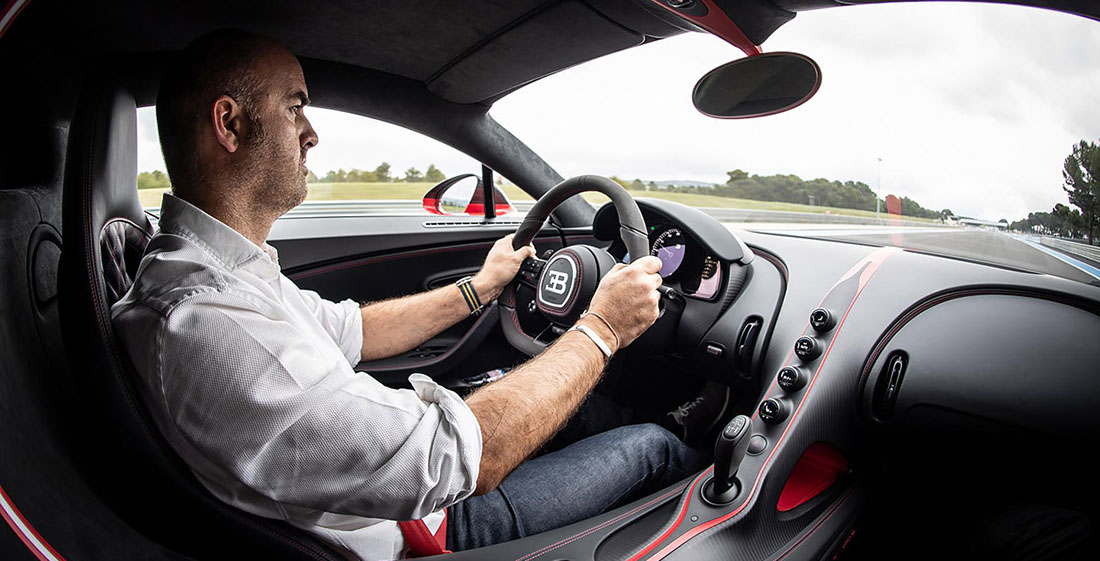
Well, does it drive any differently?
My wingman for the drive is Le Mans winner Andy Wallace, and we spend an hour and a half driving on the roads surrounding Paul Ricard. Driving a Chiron on the road is an exercise in restraint. Millimetric throttle inputs see the horizon inhaled towards you with a dismissive sigh from the wastegate as boost builds, then has to dissipate as the Chiron and the driver accept the world simply isn’t built big enough for this amount of performance. Conscious that I’m currently the only journalist in the world to have been given access to the £2.6m Chiron Sport, the responsibility, combined with the car’s width, the narrow roads and the weekday traffic, induces concentration and back sweat. As time in the car accumulates, the Chiron shrinks around you, and the weight of responsibility is replaced by the knowledge of the potential beneath your right foot and at your fingertips.
With growing confidence, I try to cross-reference my 400-mile trip in the ‘cooking’ Chiron last year, and compare and contrast the two cars. While clearly the weight change is imperceptible (equating to 12g per bhp), the longer we spend threading our way down the roads, the more I’m convinced the Sport feels more eager on turn-in and more communicative and engaging in general. But fast road speeds will only ever tell you so much, so we wind our way back to the circuit. I feel this is a good time to tell Andy I’ve never driven around Ricard before… Andy does a heroic job of looking calm about this, muttering “I’m sure we’ll be fine” as we enter the circuit.
Isn’t a Chiron just a point-and-shoot speed machine? Does it work when it meets corners?
As vehicles for an exploratory lap of a new circuit go, a ‘base’ Chiron is hard to rival, but as that’s all that currently occupies the pitlane at Paul Ricard, it seems only reasonable. After a couple of calm, accurate, seamless laps from Andy, he ducks into the pitlane and, still convinced “we’ll be fine”, we swap seats and I head out.
With the ‘regular’ Chiron in handling mode, I thread my way slowly around the circuit initially, then pile down the 1.1-mile Mistral straight. Full throttle in a Chiron doesn’t just impress, it knocks the air out of your lungs – it’s violent and initially overwhelming and, as we hit 322kph at the end of the straight, I jump on the brakes and shed vast chunks of speed with ease, then fire the Chiron into the Courbe de Signes right-hander, then it’s back on the brakes and into the double-apex right. The way the Chiron builds speed is staggering; the way it sheds it with such little drama, stays arrow straight and refuses to pitch forwards (helped by the rear wing’s airbrake) talks to the depth of engineering that lies beneath.
As the laps accumulate, confidence builds, your body adjusts (though never fully) to the acceleration, and you catch your breath and begin to dig further into the Chiron’s capabilities. On the slower-speed corners, there’s some inevitable understeer, but be patient and use the power mid-corner and you’ll find yourself lapping a nearly-two-tonne car faster than you would ever have imagined possible. Confident I’ve found my way around the circuit, we complete a cooling-down lap (the Chiron managing the extreme temperatures with ease) and swap for the Sport.
... you’re managing a gyroscopic effect of just under nine tonnes on the front axle.
The difference is clear within the first two corners – the Sport immediately feels more alive, more direct and more communicative. The torque vectoring, combined with the stiffer anti-rollbar and more aggressive suspension setting, helps to rotate the front end into the tighter corners more positively. The steering is more direct and communicative, allowing you to place the car more accurately. This, in conjunction with the mesmeric power delivery, sees us hit 352kph at the end of the Mistral straight on our first lap. The increased confidence in the front end allows you to play with the Chiron Sport in a way that you wouldn’t have thought logically possible, and, yes, you can rotate it into a corner. The Chiron will slide and in this Sport iteration, it is predictable, direct and devastatingly effective on a track, adding another string to its roster of capabilities.
While it’s hard to believe that 18kg saved from a 1,995kg car would be perceptible, dig into the maths involved at the extremes of the Chiron’s performance envelope, and small figures get very big, very rapidly at high speed. With approximately 12kg of the total weight saving coming from the wheels, the reduction of 3kg per wheel at 418kph equates to 9,000kg of rotational force per corner. Using Top Gear maths, this means when you’re turning into a corner at half that speed, you’re managing a gyroscopic effect of just under nine tonnes on the front axle. Small changes make big differences at huge speeds.
The multimillion-dollar question: could you track-day a Chiron?
The short answer: yes, you could, and I’d like to put my hand up to prove this point. Is there a world record for the most cars you can overtake in a day at the Nürburgring? If you operate at the altitude that sees the Chiron on your shopping list, then the track-day insurance and provision of your own tyre truck and pit crew will seem reasonable. Although sadly few owners will, the Sport deserves to be used hard and its potential explored, given the depth of engineering that has gone into refining it from the base product and how genuinely jaw-droppingly capable it is on a circuit. After five quick laps, the brakes remain unfazed, the temperatures unruffled and the tyres look good for another stint. So it would be rude not to…
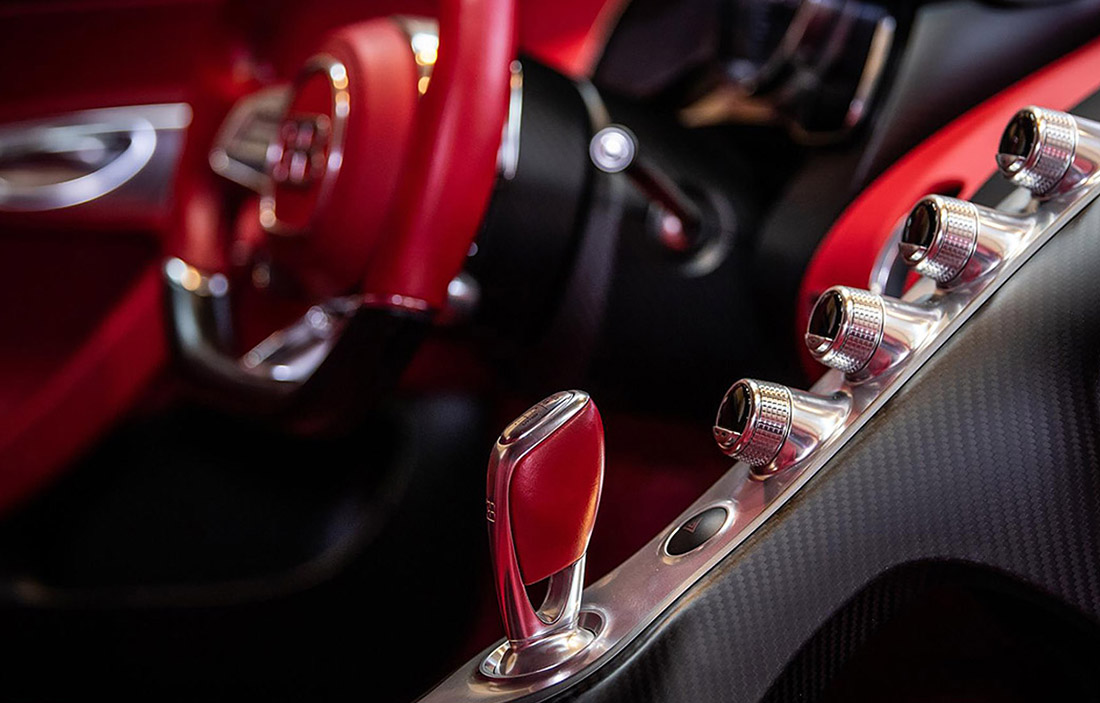
Is it worth getting over a ‘normal’ Chiron?
Yes. If you’re able to commit £2.2m for a regular Chiron, it’s definitely worth grounding the helicopter for a couple of months to stretch to the extra £131k for the Sport – after all, that’s just £7,277 per kilo. There’s a lot more going on here than just weight saving – the benefits shine on both road and track.
Does this mean there’s room for a Super Sport? What will Bugatti do then?
The Sport feels like a very natural next stage for the Chiron. But while it’s faster around a circuit thanks to improved handling, the baseline performance figures remain unchanged. Given a major part of the Bugatti story has focused on the pursuit of one thing – speed – and with the arms race to 483kph continuing to rage, it would seem logical for Bugatti to have one last blast to reclaim the title from current holder Koenigsegg. If that project were to be sanctioned, it would be driven by the opportunity to deliver more extreme versions of the Chiron, and our experience today has proved there’s more to come from this truly exceptional piece of engineering and the team who created it.
- Charlie Turner
